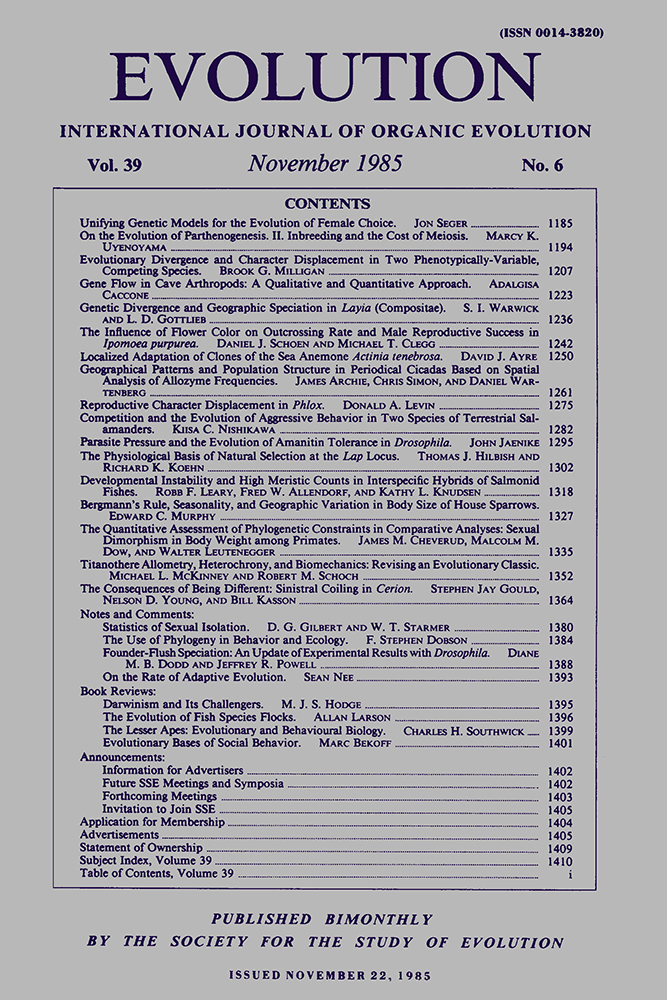GEOGRAPHICAL PATTERNS AND POPULATION STRUCTURE IN PERIODICAL CICADAS BASED ON SPATIAL ANALYSIS OF ALLOZYME FREQUENCIES
Abstract
There are twelve major broods, or year classes, of 17-year periodical cicadas and three major broods of 13-year cicadas. Previous allozyme studies of three 13-year broods and two 17-year broods suggested that broods are distinct evolutionary units, exhibiting homogeneity within broods and heterogeneity among broods. Results from numerical phylogenetic analysis of allozyme data from these broods supported Lloyd and Dybas's (1966a, 1966b) evolutionary hypothesis and were consistent with biogeographical patterns. In the present paper, we use spatial statistics to extend the analysis of biogeographical patterns for periodical cicadas by examining geographic variation in allozyme frequencies within and among ten broods for the three most variable loci.
The results from our analysis show that each gene frequency surface exhibits marked spatial autocorrelation. Three major geographic areas of similarity are indicated by the data: the eastern seaboard, the Mississippi Valley, and the eastern edge of the Great Plains. When localities are adjusted for regional membership, the autocorrelation disappears.
In biological terms, broods are homogeneous breeding units. Geographically distinct localities within the same brood show little differentiation. Differentiation among populations within broods and among broods within regions exists but is less pronounced than the differentiation among geographic regions. For the particular enzymes examined, allozyme frequency differences appear to reflect the phylogenetic history of the broods rather than their environmental surroundings.




